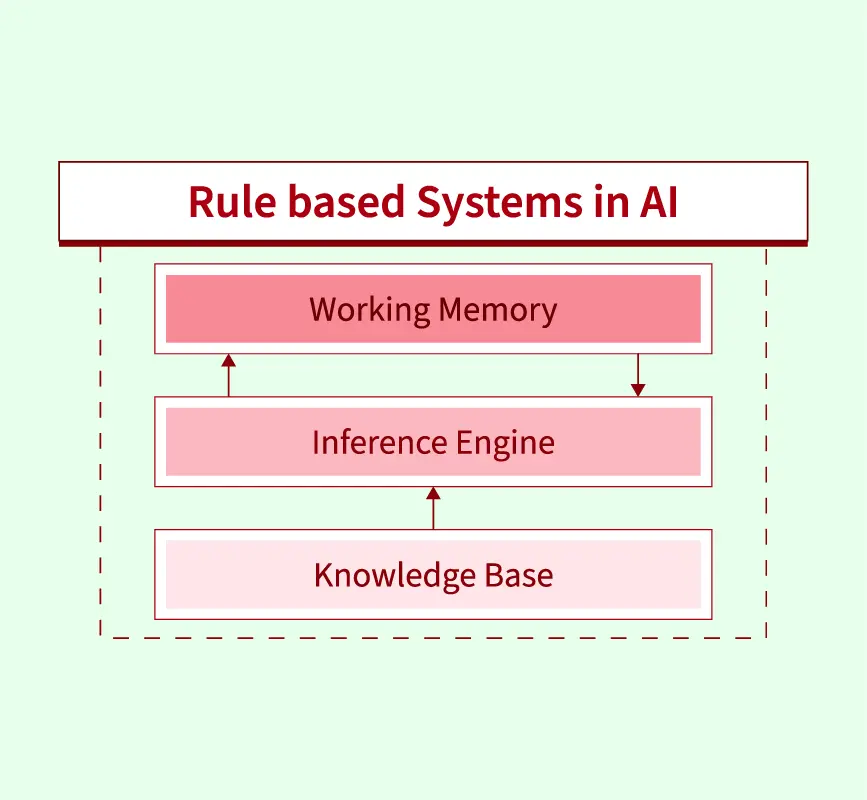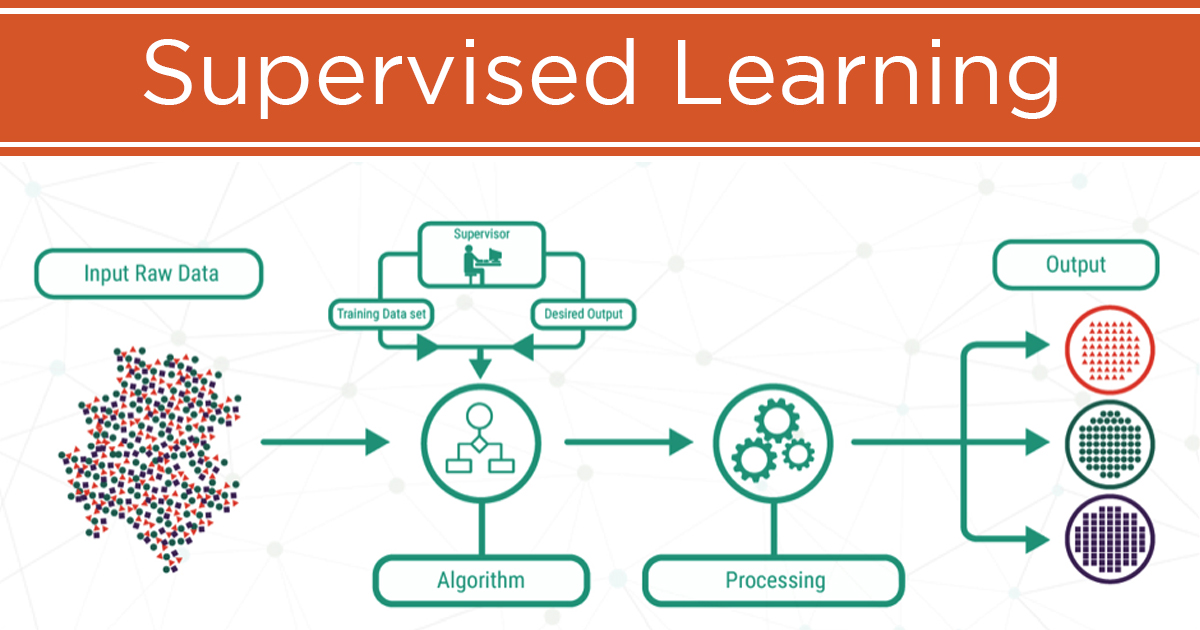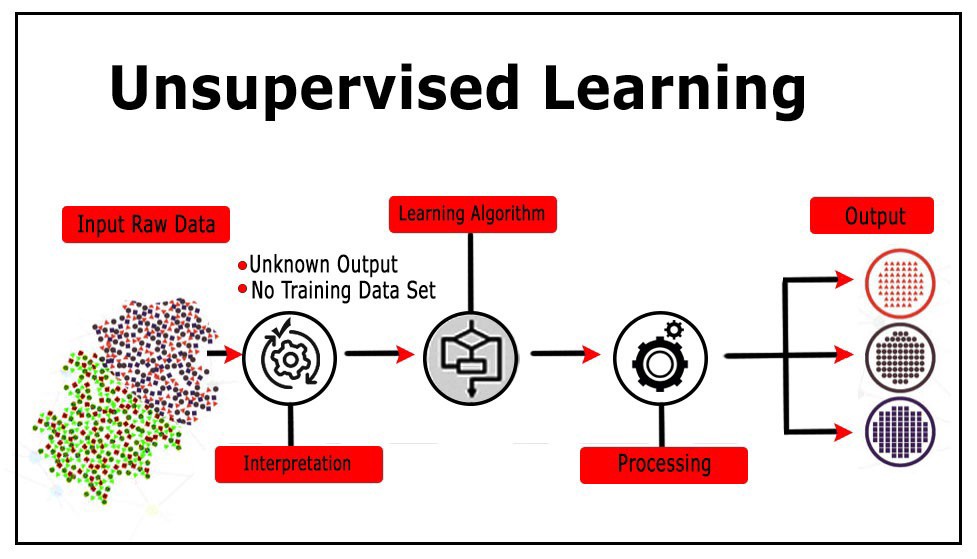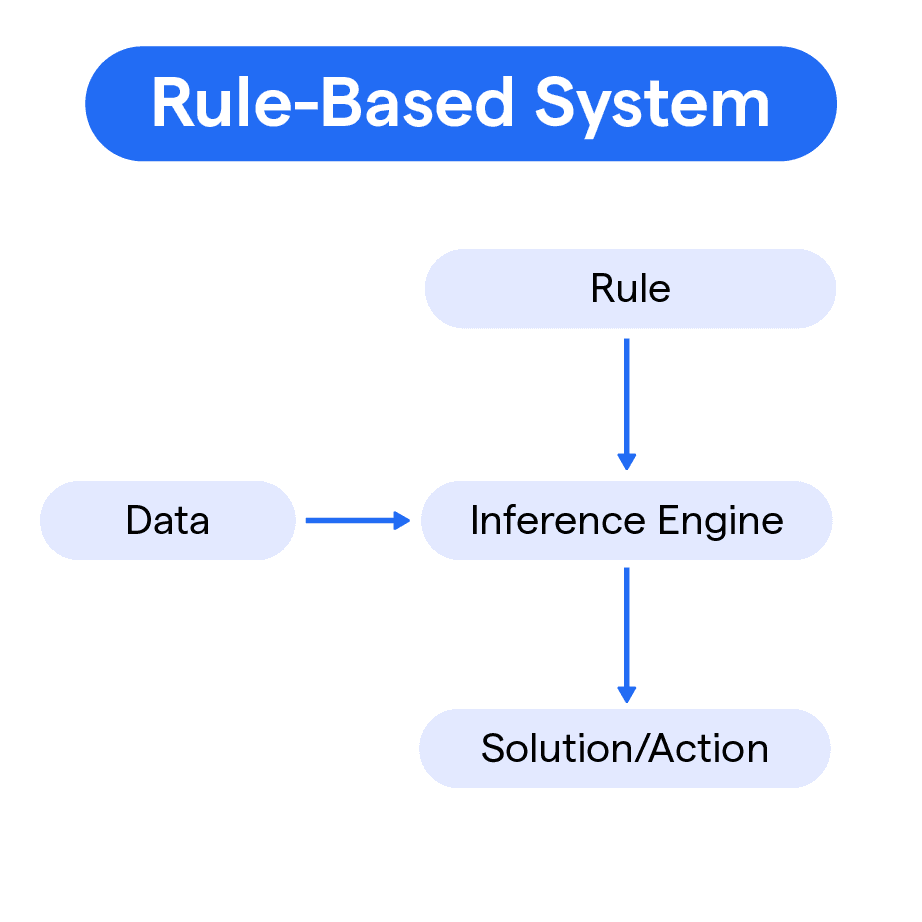What is a Rule-Based System?
A rule-based system is a type of artificial intelligence that uses a set of pre-defined rules and logic to make decisions and solve problems. It consists primarily of two components - a set of rules or inferences, and a database of facts and premises.
The rules in a rule based system are structured in the IF-THEN format and contain conditions and conclusions. For example, a simple rule could be:
IF the day is sunny
AND temperature is greater than 80°F
THEN recommend wearing sunscreen
The database contains known facts that the rules rely on, such as the current weather and temperature. The rule engine applies the rules to the facts to deduce new information.
Rule based systems are effective at automating operational decisions in business, manufacturing, and other domains. They offer explainable logic, are easy to maintain, and can replicate human expertise. However, defining comprehensive rules requires substantial domain knowledge.

How does a Rule-Based System work?
A rule based system consists of two key components - a set of rules or inferences and a database of facts and premises.
The rules are structured in an IF-THEN format, where the IF part lists the conditions that must be satisfied, and the THEN part describes the resulting actions or conclusions if the conditions are met.
For example:
IF the account balance is low
AND transactions exceed $500
THEN alert customer for potential overdraft
The database contains all the facts and assertions that the rules rely on to operate. Facts can include measurements, sensor data, input data, user profiles, application state etc.
A rule engine sequences the rules set and applies them to the available facts from the database. It checks which rule conditions are met based on the current facts. Once a rule is triggered, the rule engine executes the corresponding action in the THEN part.
This inference process continues until no more rules can be matched or a final goal state is reached. Chaining together multiple rules enables complex logic and deductions.
Rule-based systems are commonly used in domains like diagnostics, customer service chatbots, and business process automation. The modular structure of rules and facts makes them interpretable, maintainable, and customizable.
Characteristics of Rule-Based Systems
In this section, we'll delve into the defining characteristics of rule-based systems.
Set of Rules
At the heart of rule based systems lies a comprehensive set of rules. They constitute the knowledge base and provide detailed guidelines that the system should follow. These rules, framed in the form of "IF-THEN" statements, guide the system's operation.
Inference Engine
Rule-Based Systems are armed with an Inference Engine. It's tasked with applying the rules from the knowledge base to the given data and deducing logical conclusions. It's this engine that powers the system's decision-making processes.
Interpretability
One big advantage of a rule based system is its interpretability. The logic of the system is transparent and easy to follow, owing to the clear, human-understandable rules. This transparency aids in debugging and aids in the trustability of system outcomes.
Expert Knowledge
Rule-based systems capitalize on expert knowledge. The rules they incorporate are often derived from domain experts, creating a pool of specialized knowledge that enables these systems to work effectively within their specific domain.
Flexibility
Last but not least, flexibility is a hallmark trait of rule based systems. In them, new rules can be easily added, and existing ones can be tweaked or removed, allowing for straightforward updating and expansion as required.
At their essence, rule based systems are a powerful propagation of expert knowledge designed to operate within a predefined set of rules to make educated decisions.
Critical Components of Rule-Based Systems
In this section, we'll discover the core components that form the backbone of a rules-based system. The Knowledge Base
The knowledge base is a comprehensive collection of rules that the system abides by. These "if-then" rules form the heart of rules-based systems, prescribing specific actions for every conceivable scenario the system might encounter.
The Inference Engine
The inference engine is the brain of a rules-based system. It selects and applies rules from the knowledge base based on the data it is given. This is where the actual problem-solving happens, as the engine interprets the rules and applies them to reach a conclusion.
The Working Memory
The working memory is an integral player in this AI arena. It holds the specific data the system uses in its operations - the facts and figures that the inference engine applies its rules to, in its relentless pursuit of arriving at logical conclusions.
The Explanation Facility
Stepping into any system blindfolded isn't prudent, is it? That's where the explanation facility comes in—its role is to clarify decisions and processes. A rules-based system leverages this component to explain its reasoning and actions to the user.
The User Interface
Last but not least, the user interface is the gateway for users into the system. It provides a means of interaction, allowing users to input data and examine the conclusions reached by the system.
Suggested Reading:
Case-based Reasoning
Rule-Based Systems Vs. Learning Systems
In this section, we'll unravel the key differences between rules-based and learning-based systems.
Definition
Rules-based systems, like an overbearing parent, provide a strict set of instructions that computers obediently follow. Think of a cooking recipe - a step-by-step guide to get to the final dish.
On the flip side, learning-based systems are like curious toddlers, continuously learning and evolving from their experiences and data without any pre-set rules.
Flexibility
When it comes to flexibility, rules-based systems have less wiggle room. They dutifully follow their pre-defined instructions and struggle with unexpected inputs.
On the other hand, learning-based systems are more adaptable. They are designed to be flexible and can handle unforeseen situations more effectively – they're kind of like a jazz musician, impromptu but in tune!

Handling Complexity
Rules-based systems tend to stumble when complexity increases. Imagine trying to follow a recipe that changes with each ingredient you add and ends up being completely different from what you've originally planned.
In contrast, learning-based systems handle complex situations better, dynamically adjusting their responses just like we adjust our steps on a crowded dance floor.
Data Dependencies
A fundamental difference between these two systems lies in their reliance on data. Rules-based systems don't need much data; they just obey the set rules. It's akin to travelling the same route every day; you don't need a map once you know the way.
However, learning-based systems thrive on data, using it to learn and improve over time. They're like explorers charting new territories with every journey they undertake.
Maintenance and Updation Needs
For maintaining rules-based systems, you need to continually update and manage rules - it’s like clockwork that needs regular winding. Contrarily, learning-based systems automatically refine themselves with continuous exposure to new data, like a student who learns more with each lesson.
Types of Rule-Based Systems
There are different types of Rule-based Systems to know about, such as
Data-Based Construction
A machine learning method that is, in general, domain-independent. Machine learning techniques can be categorized into two sub-types: supervised learning and unsupervised learning.
Supervised Learning

Learning with assistance. All instances from a data set are labeled, and the aim is to predict attribute values for unknown instances by using the known data instances.
Supervised learning is involved in both classification and regression tasks that can be used for categorical prediction and numerical prediction, respectively.
Unsupervised Learning

Learning without any help. All instances from a data set are unlabeled, and the aim is to find earlier unknown patterns from data sets.
It includes association, which aims to find relationships among attributes about their values, and clustering, which aims to find a group of objects that are similar from data sets.
Pros and Cons of Rule-Based Systems
Here, we are going to delve into the advantages and the drawbacks of rule-based systems in the realm of artificial intelligence (AI).
Advantages of Rule-Based Systems
Rule-based systems offer the benefit of explainability, meaning the decision-making process is transparent due to the pre-defined rules.
They are straightforward to implement, often efficient for automating tasks in well-understood domains, and are computationally less expensive than certain other AI techniques.
Disadvantages of Rule-Based Systems
Despite their advantages, rule based systems aren't without flaws. They often struggle with handling intricate tasks that involve ambiguity or require learning from experience.
Expanding a robust rule-based system can be complex, and maintaining such a system can be challenging as it scales. Also, unless the rules are immaculately defined, the system can make incorrect assumptions.
Trade-off: Interpretability versus Flexibility
While rule-based systems excel in interpretability, they lag in flexibility. They are incapable of learning autonomously and are constrained to the rules initially provided.
In contrast, machine learning models extract insights from data, enabling them to learn, evolve, and improve over time.
Applicability of Rule-Based Systems
Although rule based systems can be effective, they are not universally applicable. They work best in controlled, well-defined settings.
In the complex and dynamic real world, where situations frequently change, and ambiguity is common, these systems may risk inaccurate or ineffective responses.
Future Prospects for Rule-Based Systems in AI
Despite their limitations, rule-based systems persist as a critical technique in numerous AI applications.
When combined with alternate methods, such as machine learning, the weaknesses of rule-based systems can be compensated, leading to the creation of more robust and effective artificial intelligence solutions.
Frequently Asked Questions (FAQs)
How does a Rule-Based System differ from traditional programming?
A Rule-Based System uses human-made rules to process data, while traditional programming uses code instructions.
Rule-based systems are more flexible and allow for easier updates and modifications.
Can a Rule-Based System handle complex decision-making tasks?
Yes, Rule Based Systems can handle complex decision-making tasks.
The system is designed to process large amounts of data and follow intricate sets of rules to derive solutions.
What are the advantages of using a Rule-Based System?
Rule-based systems have several advantages:
- They can combine the knowledge of human experts
- They operate using uncertain or incomplete knowledge
- They are robust and can handle a variety of scenarios
- They support various knowledge representation paradigms
Can Rule-Based Systems adapt to changing conditions?
Yes, Rule-Based Systems can adapt to changing conditions. The rules can be modified or updated as needed, allowing the system to respond to new information and adjust its decision-making process.
Are Rule-Based Systems commonly used in industry applications?
Yes, Rule-Based Systems are widely used in various industry applications such as healthcare, finance, and manufacturing.
They help automate decision-making processes, improve efficiency, and ensure consistency in operations.

